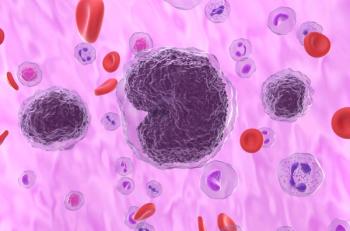
The Role of Financial Incentives in Improving Patients' Medication Compliance
A new study suggests that financial incentives shared by both doctors and patients work best at improving medication compliance among patients.
Financial incentives shared by both physicians and patients produce greater reduction in low-density lipoprotein cholesterol (LDL-C) in patients compared with paying only the physician or only the patient, a
David A. Asch, MD, of the Perelman School of Medicine at the University of Pennsylvania, and colleagues followed 340 primary care physicians and over 1500 of their patients for 12 months to see if financial incentives improved the patients’ compliance with statin therapy prescribed by the doctors to lower LDL-C levels in patients with high levels of cardiovascular risk. Patients were aged 18 to 80 years and were eligible for the study if they had a 10-year Framingham Risk Scores (FRS) of 20% or greater, had coronary artery disease equivalents with LDL-C levels of 120 mg/dL or greater, or had an FRS of 10% to 20% with LDL-C levels of 140 mg/dL or greater.
Researchers divided the patients into 4 groups: physician-only incentives; patient-only incentives; both patient and physician incentives; and a control group that received no incentives. Physicians in the physician-only incentive group were eligible to receive financial rewards up to $1024 per patient, while physicians in the shared-incentive group would split the payout with their patients, receiving a maximum of $512 each. Patients in the patient-incentive group were eligible for $1024, distributed through daily lotteries tied to medication adherence. Physicians and patients in the control group received no incentives tied to outcome but all patient participants received up to $355 each for trial participation.
Adherence to therapy was verified by electronic pill bottles that recorded when patients took their medications.
The study found that 49% of patients in the shared-incentive group reached their previously determined LDL goal (average reduction, 33.6 mg/dL) compared with 36% to 40% in the other 3 groups, where either no incentive was received (average reduction, 25.1 mg/dL) or where incentives were given only to physicians or to patients (average reductions, 27.9 mg/dL and 25.1 mg/dL, respectively).
Patients receiving financial incentives increased their adherence, but not enough to change their LDL compared with the control group, coauthor Andrea B. Troxel, ScD, noted.
“Patients whose physicians received financial incentives tended to have their cholesterol medication prescribed more intensively, but that also wasn’t enough to change their LDL,” she said. “Only when both physicians and patients received incentives together did we see a significant reduction in LDL.”
Dr. Volpp pointed out that although medication adherence was higher in the shared incentives group, it was low in all groups.
“This is not surprising, since previous studies have documented poor medication adherence in patients with chronic diseases, especially where the conditions do not typically produce immediate symptoms that might motivate adherence.”
Newsletter
Stay ahead of policy, cost, and value—subscribe to AJMC for expert insights at the intersection of clinical care and health economics.













































